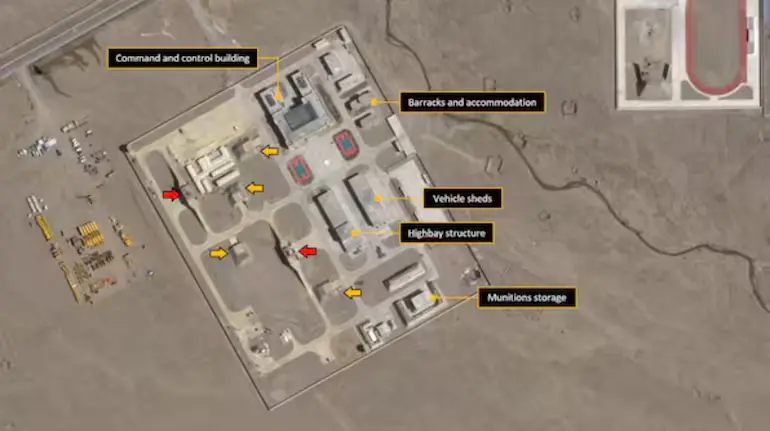Fresh satellite imagery has revealed the construction of a major Chinese air defence installation along the India-China frontier, situated on the eastern banks of Pangong Lake in Tibet, roughly 110 km from the 2020 Galwan clash site. The development signals Beijing’s continued military build-up in the sensitive Ladakh sector, raising concerns about its long-term strategic intentions.
According to an India Today report, the new facility features command and control centres, barracks, vehicle sheds, munition storage, and radar installations. The most notable element is a set of covered missile launch positions with retractable sliding roofs, designed to house HQ-9 long-range surface-to-air missile (SAM) systems. These structures allow Transporter Erector Launcher (TEL) vehicles to remain concealed and protected, capable of launching missiles directly through roof hatches — enhancing both survivability and operational readiness.
The design closely resembles similar Chinese missile shelters in the South China Sea, indicating a broader pattern of hardened, concealed missile deployments across key strategic regions. A similar setup has also been identified at Gar County, near India’s newly upgraded Nyoma Airfield, located about 65 km from the Line of Actual Control (LAC).
Experts suggest that these facilities are linked through wired data networks, likely integrating air defence components with real-time command and control systems. The complex is still under construction, with reports of a second site emerging near Pangong Lake, potentially serving as another SAM battery or weapons storage hub.
Military analysts believe that China’s expanding infrastructure in the region reflects a deliberate strategy to strengthen its air defence coverage and reinforce deterrence along contested borders. By replicating its South China Sea model in the Ladakh theatre, Beijing appears to be creating a fortified air defence belt aimed at maintaining tactical advantage and rapid response capability against India.













